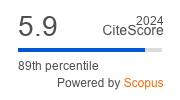Article | Open Access
Precariousness and Hope: Digital Everyday Life of the Undocumented Migrants Explored Through Collaborative Photography
| Views: | 3099 | | | Downloads: | 1659 |
Abstract: The article explores the digital everyday life of recently or currently undocumented migrants in times of Covid-19 in Finland. It is based on an empirical case study on a collaborative photographic exhibition and workshop including visual images, diaries, interviews, and discussions. The analysis explores the ways in which a photography exhibition and a workshop may depict meaningful moments in digital everyday life as well as open up an understanding of the various vulnerabilities that emerge in the life of the undocumented, as expressed by themselves. The study demonstrates the fundamental importance of communication rights for people in precarious life situations, expressed by themselves in visual images. The insight produced multidimensionally in images, discussions, and interviews illustrate how digital media environment exposes to coerced visibility and requires constant struggle for communicative rights. These struggles take place on the material infrastructural level of devices, chargers, and access, but also on the level of self-expression and connection on social media platforms. Finally, the article discusses the emancipatory potential of a collaborative exhibition and workshop as a way to encounter and deal with increasingly vulnerable life situations. It points out the relevance of collaborative work as a research method, in providing knowledge from experience as well as space of recognition.
Keywords: communicative rights; datafication; digital everyday life; participation; photography; undocumented migrants; visibility
Published:
© Kaarina Nikunen, Sanna Valtonen. This is an open access article distributed under the terms of the Creative Commons Attribution 4.0 license (http://creativecommons.org/licenses/by/4.0), which permits any use, distribution, and reproduction of the work without further permission provided the original author(s) and source are credited.


